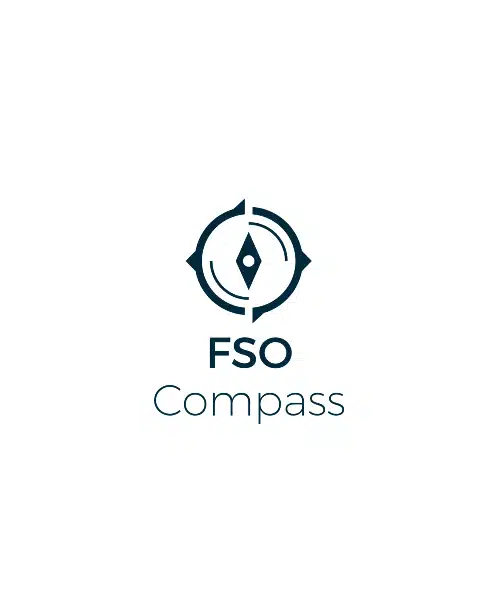The Foreign Service Officer Test (FSOT) Situational Judgment section leaves many candidates wondering, “how do you pass this”?
If this is you, this post offers the opportunity to learn from others, my experience, and what the Department of State officially posted.
What is the situational judgment section?
The situational judgment section presents scenarios (i.e., descriptions of situations) that a diplomat might encounter in their career.
The Situational Judgment Test (SJT) is designed to assess an individual's ability to determine the most and least appropriate actions given a series of scenarios. The questions were written to assess precepts or competencies that are related to the job of a Foreign Service Officer, including Adaptability, Decision Making and Judgment, Operational Effectiveness, Professional Standards, Team Building, and Workplace Perceptiveness. (NOTE: Knowledge about the State Department's policies, procedures, or organizational culture is NOT required to answer these questions.)
Information Guide to FSO Selection
On the test itself, this is how the directions will prompt you (also from the information guide):
The SJT presents 28 scenarios (i.e., descriptions of situations) that you might encounter on the job as a Foreign Service Officer. Each scenario is accompanied by possible responses to that scenario. For each scenario, select the BEST response and the WORST response. The SJT section of the test consists of 28 scenarios administered in 42 minutes.
Information Guide to FSO Selection
And here is an example question (again from the information guide):
Your supervisor edited a document you drafted that will be sent to your agency headquartered in Washington, DC. You think the document was much better without the edits. What should you do?
- Accept all the edits and say nothing to your supervisor.
- Ask to speak to your supervisor to understand the reasons for the edits.
- Accept only the edits you agree with and send the document to Washington.
- Ask your supervisor to explain how you can improve your writing skills.
- Discuss the edits with your supervisor and suggest accepting only the most important edits.
As you can see from the example, and as the section title suggests, each scenario places you in a situation, and you must select the proper action so that State can judge your judgment skills (semi-meta).
The scenarios will purposefully place you in a situation of confrontation or tough decision-making. How you react is the key to success.
Let’s return to the description provided by State to dive further into what the situational judgment section wants to accomplish with some added emphasis:
The SJT is designed to assess an individual's ability to determine the most and least appropriate actions given a series of scenarios. The questions were written to assess precepts or competencies that are related to the job of a Foreign Service Officer, including Adaptability, Decision Making and Judgment, Operational Effectiveness, Professional Standards, Team Building, and Workplace Perceptiveness.
First, you must act. The Board of Examiners (BEX) makes that evident in the first sentence of their description. They want to determine your thinking by the action step you deem best and worst.
Second, BEX works from a foundation of “precepts” and “competencies.” These are not general terms. The Department of State has a bedrock of qualities they look for in FSO candidates and expect their Officers to improve throughout their careers. Best of all, these are not secret codes of conduct that only the initiated can know, far from it.
They are based on public documents that you can have access to! Most folks know about one of them, but it’s the second that I am surprised more are not aware of. Luckily for you, I am about to share both of them below.
How to pass the situational judgment section
What follows is my tactic for passing the situational judgment section of the FSOT. If you are brand new to the blog, please note that these are my opinions, and you are welcome to incorporate them or ignore them in your studies (I do not represent State or BEX, and these opinions are my own).
I am not writing in a vacuum. I’ve taken the actual FSOT and the practice tests and have passed the situational judgment section with high scores compared to the cohort who have shared passing numbers.
If you decide to follow the below, it doesn’t mean you will pass the situational judgment section with 100%. What I provide below is a framework. Though it is a robust framework, I encourage you to think critically about the information provided and not blindly follow it. If you do the latter, you miss the point of the SJ section.
With that out of the way, let’s dive in. To pass the situational judgment section, there is:
- One rule;
- One chart and “environment”; and
- Eight principles.
The one rule
Your world is the prompt.
Don’t roll your eyes, don’t think this is a cop-out, and don’t overlook this rule. This is the ONLY rule for a reason.
BEX already states that “knowledge about the State Department’s policies, procedures, or organizational culture is NOT required to answer these questions.”
So don’t worry about what could be happening outside of the prompt.
Furthermore, and more importantly, don’t worry about the “what ifs:”
- What if I don’t get along with my boss?
- What if I am brand new to the job, and maybe this is how they do things?
- What if I know he is a micromanager, or I know she doesn’t want to be told things?
- Etc.
Only consider the above if it is in the prompt. During the test, the prompt is the world, your world.
In practice, what does this mean? Let’s look at the example above again:
Your supervisor edited a document you drafted that will be sent to your agency headquartered in Washington, DC. You think the document was much better without the edits. What should you do?
- There are two people involved – you and your boss
- A situation occurred – your boss made edits that you disagree with.
The one chart and "environment"
The Department of State is a hierarchical organization. That means you have a boss, your boss has a boss, she has a boss, etc. Additionally, you will (most likely) oversee staff, which makes you a boss.
So keep this chart in mind:

Unless the prompt states otherwise (keep to the rule!), you are the far-left green person in the hierarchical structure.
The “environment” is to imagine that everybody in the organization gets along and is busy with their work.
(Wouldn’t that be nice in real life…)
The prompt is a new variable added to your environment and thus creates an imbalance. Your goal is to get back to equilibrium.
And to get back to equilibrium, you must address the issue.
The eight principles
To address the issue, here are eight principles to maintain while you review the prompt:
- Follow the chain of command;
- If tasked with an item, do it;
- Research, be informed;
- Keep to deadlines;
- Don’t punt, be a leader;
- Respect your colleagues;
- Take action; and
- Be direct (i.e., don’t be passive and don’t be passive-aggressive).
The BEST response is the one that upholds the above. The WORST response is the one that does not execute the above or breaks with most of the principles.
Let’s briefly discuss each one.
1. Follow the chain of command
You are part of a bureaucratic organization with supervisors. You need to respect this aspect of the job. This does not mean you must follow it blindly if your boss tells you to do something. No. However, it means you must respect the task.
Only go to your boss’s supervisor after first checking and understanding why your boss is making a decision. You should only go over your supervisor’s head as a last resort.
2. If tasked with an item, do it
As we have already discussed, BEX is looking for you to take the best action, which means you must act on the given issue. You have been delegated responsibility, and as such, you are the item’s owner. Your responsibility is to succeed or fail, so make sure you act.
3. Research, be informed
Don’t be a “yes man,” blindly accept precedent, or do things because others have pushed it through.
If something doesn’t seem right to you or you are unsure of an action to take, do what you have to inform yourself, and do so first as an individual. This will mean research manuals, looking up procedures, speaking with your supervisor for reasons to feedback, and more. What is essential is to seek further understanding to act.
Let me repeat that critical word once more, in case you missed it. Act as an individual first. Remember the environment; everybody is busy with work. Would your colleagues help you, of course. But State is looking for efficient and self-driven individuals. If you bother your colleagues every time you do not know the answer, then (a) you won’t learn, and (b) you will disrupt their work.
4. Keep to deadlines
If you are given a task with a deadline, do everything you can to meet that deadline. Providing nothing is often worse than delivering something – make sure you note all the missing things to be transparent.
5. Don't punt, be a leader
Remember the “environment”; everybody is busy in the well-oiled bureaucratic machine. If you assigned a task, you need to do everything you can to complete that task. Don’t seek others to do your assignments (don’t punt).
If you oversee a team, then lead and delegate. Leverage the employees’ skills that you manage, provide reasons for decisions, and be the strategist.
6. Respect your colleagues
This one builds off of the others but still deserves its own principle. Don’t be a pain to others. Don’t be disparaging. Don’t treat others poorly. Within this principle also lies the following, be culturally respectful and supportive. This includes having the patience not only to learn but also to teach. Furthermore, do respect that if your colleagues have a dissenting opinion, you need to be professional and open to hearing differing views and trying to reach a consensus. Also, don’t keep your colleagues in the dark, be transparent with your rationale and direction.
7. Take action
This principle also builds off a previous one but deserves its own highlight. You must act; no action is usually the worst choice. Passive action is a close second. If you cannot take action without a supervisor’s approval, do everything you can up to that point and more. Accomplish this by having plans of action or solutions to discuss with your supervisor and the choice you would like to pursue (but be open to feedback and course-correcting).
8. Be direct (i.e., don't be passive and don't be passive-aggressive).
If you have a concern, tell the person (even if that person is your supervisor or someone higher up in the chain). If you do not like something taking place, bring it to light. If you don’t like what your colleague is doing, don’t start rumors, and don’t be passive-aggressive. Be direct and tell the person what is on your mind, how they are being disruptive, or how a situation is causing XYZ’s problem.
Why the above works
Do you see how easily many dimensions fit into the eight principles we just went through?
Now go and review the precepts document. Seriously, go and read just a few pages. It’s a gold mine.
I’ll wait…
Ok, I assume you read some of it. This document is/was the rubric for determining FSO tenure and promotion, but we can still apply it to the situational judgment section.
How?
Under each section, you will see bolded comments that are crucial metrics.
For example, look at the leadership skills section, specifically the “openness to dissent and differing views” part.
The entry-level officer needs to: “Manages conflict constructively. Exhibits self-awareness, compassion, professionalism, and composure under pressure. Adapts behavior and work methods as needed in response to new information, changing conditions, or unexpected obstacles. Demonstrates critical reasoning and adaptability. Identifies the strengths and weaknesses of various approaches; outlines realistic options. Holds oneself accountable; seeks informal feedback in order to grow. Raises concerns appropriately and, when necessary, uses appropriate avenues for dissent. Demonstrates open-mindedness to change and innovation.”
WOW.
I’ve gone ahead and condensed the information in these two resources into the eight principles, but I highly recommend that you review both of them.
Putting it together with an example
You will do well in the situational judgment section if you understand the above. Let’s return to our example:
Your supervisor edited a document you drafted that will be sent to your agency headquartered in Washington, DC. You think the document was much better without the edits. What should you do?
- Accept all the edits and say nothing to your supervisor.
- Ask to speak to your supervisor to understand the reasons for the edits.
- Accept only the edits you agree with and send the document to Washington.
- Ask your supervisor to explain how you can improve your writing skills.
- Discuss the edits with your supervisor and suggest accepting only the most important edits.
Which is the BEST and which is the WORST? Click below when you are ready:
2
State department reason: You should speak to your supervisor to ensure that your original draft did not contain problems that you could avoid in the future. You should also verify that any changes he/she made were not due to a misunderstanding of your draft. Additionally, it is possible that talking to your supervisor could result in revisions to the edits and ultimately improve the document.
3
It is unclear whether your supervisor intended for you to send the document without further discussion. You also are not sure whether your supervisor has identified other issues he/she wanted to review with you before it was sent. Additionally, you have unilaterally ignored some of your supervisor’s edits.
- This is passive, not direct. You are not conducting research to inform your decision-making (i.e., determining why there is a difference of opinion and how you can improve if necessary).
- You are being direct, you are seeking knowledge, and you are taking action. BEST
- This is passive-aggressive, goes against the chain of command, shows a lack of respect for your colleagues, and is not conducting research to learn more. WORST
- This is a start, but it only goes halfway. The prompt doesn’t go into detail about what the edits are. Your writing skills could be fine, and the revisions could be more about substance. Additionally, this is passive to your supervisor; you are not raising awareness of your disagreement but deferring to your supervisor’s judgment. Better than C.
- This action could lead to confrontation with your supervisor. Though it shows interest in determining differences, you are not offering complete support.
Study material
A note regarding situational judgment practice tests that are not created by State, which you will find online. Take them with a grain of salt. Unlike the English Expression and the Job Knowledge sections, the Situational Judgment questions are unique to the State Department. I’ve read a few non-State study guides with situational judgment questions, and they’re always off. I’ve also looked online, and the questions are majority geared to retail (and primarily out of the U.K., which is interesting. Perhaps S.J. questions are more common across the pond).
I recommend sticking with the State Department’s practice test and FSO Compass.
Concluding remarks
I hope you find this information on passing the situational judgment section of the FSOT helpful, and I welcome your feedback.
Candidates with less job experience will find this section challenging, but it is possible. So, I hope the above will help you understand the importance that the BEX places on acting the “right” way.
You will also notice that I never state a ranking regarding the principles. I did this on purpose. Each prompt will be different, and the options for each prompt will differ from previous prompts. Act accordingly.
You must follow the “one rule,” carefully read what is being asked, and apply the principles. You will only have to use some of the principles for some prompts. It is essential to be familiar with them and apply them accordingly.



